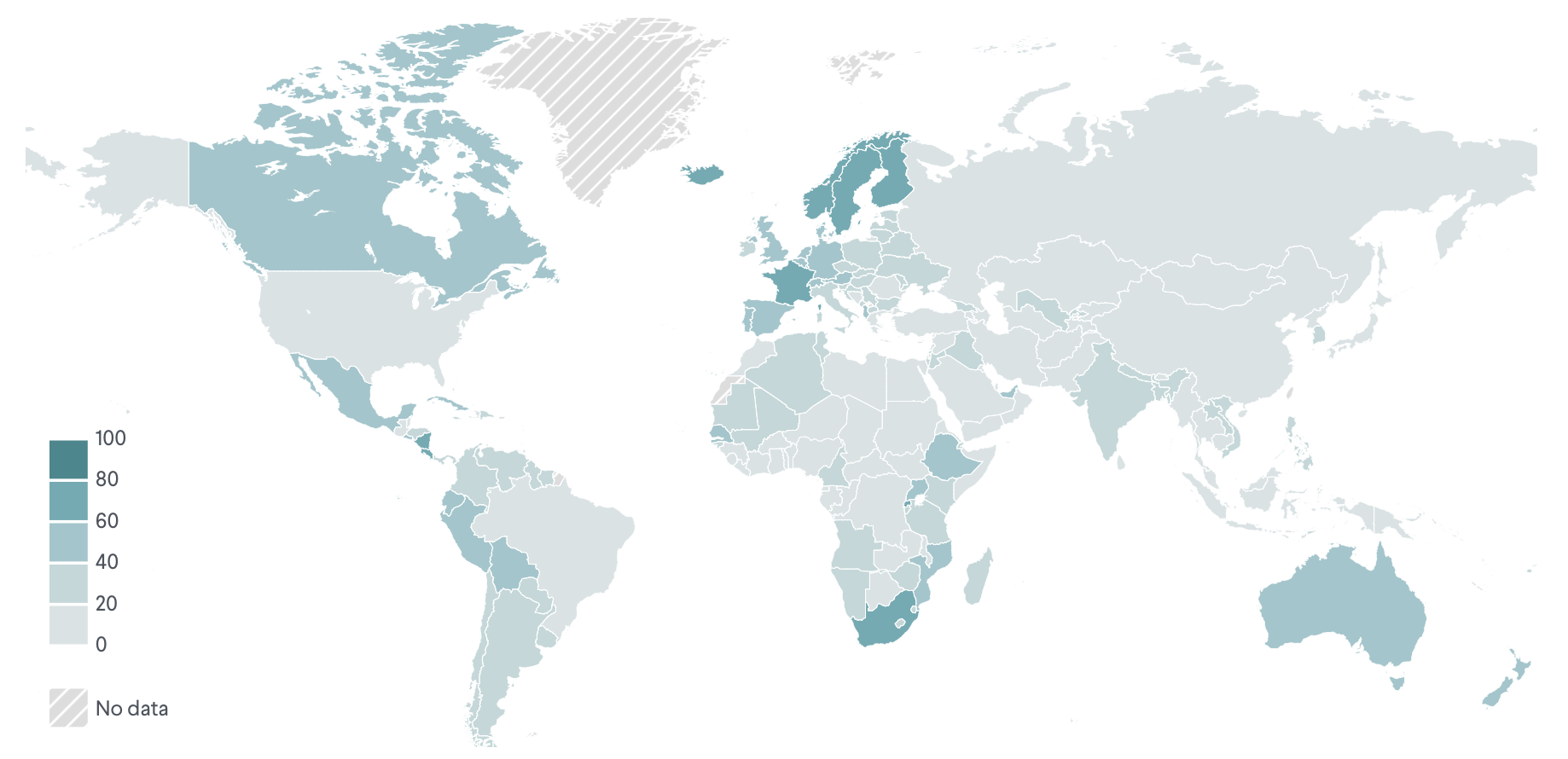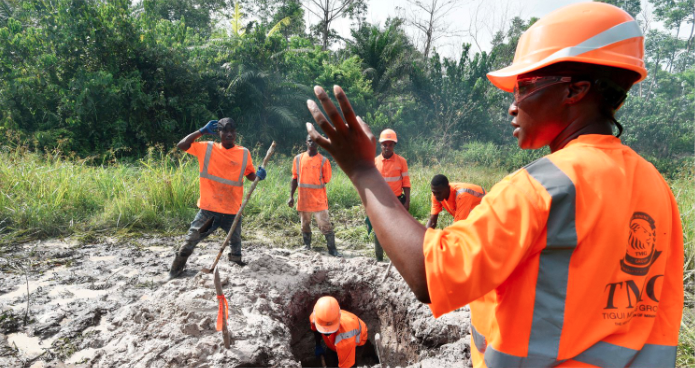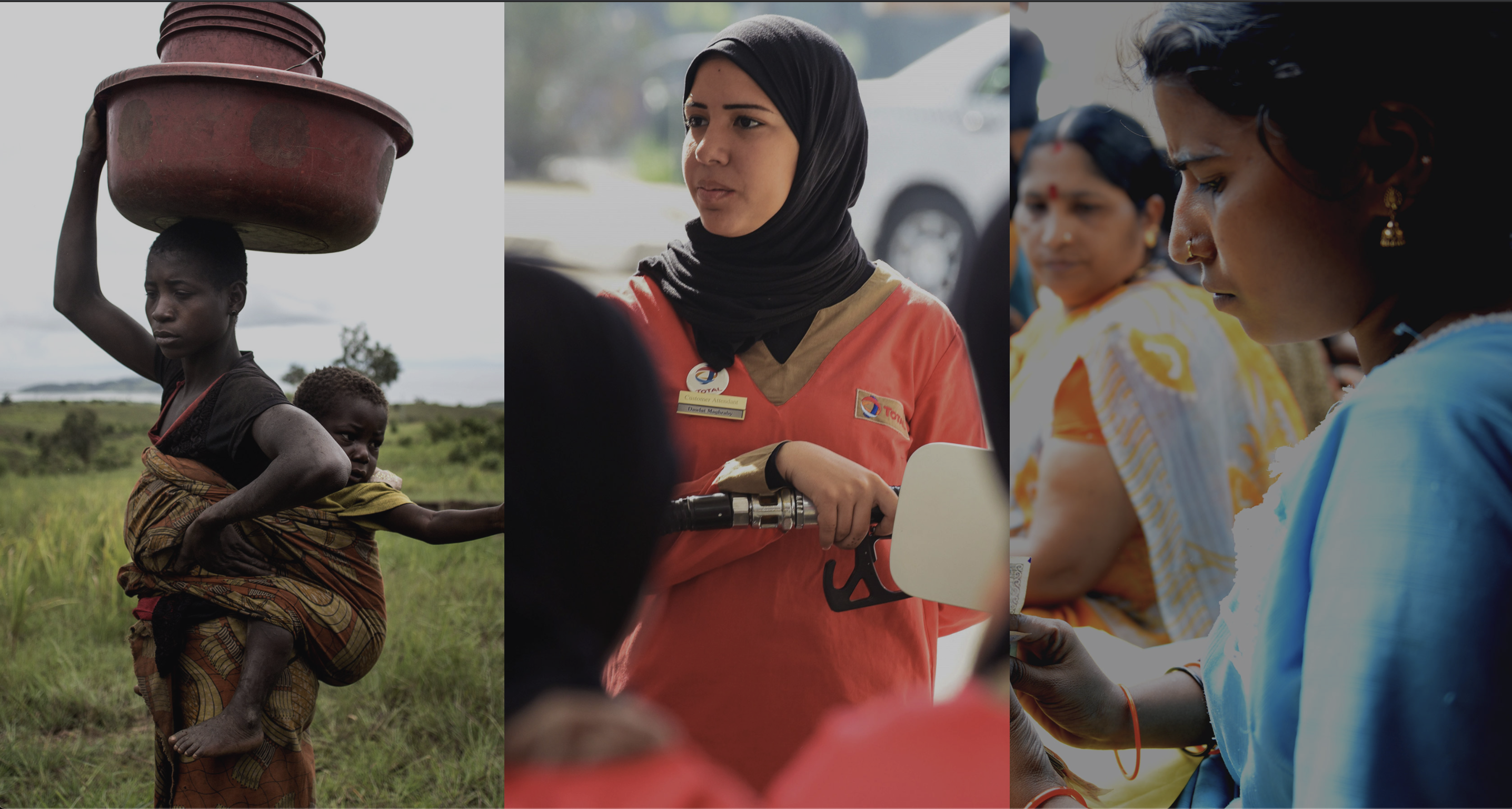Syrian women have fought to secure a significant role in efforts to resolve the conflict. Though several initial rounds of talks included no women in formal roles, up to 15 percent of the negotiators in UN-mediated discussions in December 2017 were women. In January 2018, Russia convened the Syrian National Dialogue Congress in Sochi, but women only constituted 15 percent of party delegates. However, a breakthrough occurred in September 2019, when the Syrian Constitutional Committee was appointed with nearly 30 percent women, the highest percentage ever for a Middle East peace process. The constitutional committee, which is tasked with drafting a new constitution for Syria, is comprised of both a small body and a large body. The small body has continued to meet since 2019 and is comprised of thirteen women out of a total of forty-five members. In addition, the Syrian Women’s Advisory Board—comprised of fifteen members—continues to consult with the UN special envoy for Syria and successfully works across political lines to advocate for the inclusion of women in peace processes and to find consensus on controversial issues critical to stability, including aid delivery and the release of detainees.
Women are at the forefront of conflict resolution and mediation at the local level, leading efforts to negotiate cease-fires, organize nonviolent protests, police the streets, work in field hospitals and schools, distribute food and medicine, and document human rights violations. Women in civil society have adapted to new dangers and stepped into roles traditionally held by men to work on behalf of peace and security, including advocating for the release of political prisoners
The Syrian conflict has ravaged the country since 2011, when protests against President Bashara al-Assad quickly turned into a war between the government and rebel groups. Over 350,000 people have been killed as of June 2022, according to UN estimates. The Syrian Observatory for Human Rights (SOHR) puts the figure much higher, with more than six hundred thousand deaths. The UN estimates that an additional 5,500,000 people have fled the country as refugees, and that 6,800,000 are displaced within Syria. Civilians have been targeted in brutal attacks that amount to war crimes, and the Assad regime has denied UN convoys access to rebel-held areas for the distribution of medicine and food. Military intervention by several outside parties has further prolonged the conflict, particularly as the self-proclaimed Islamic State expanded from Iraq into Syria. Multiple rounds of talks since 2012 in Geneva, Nur-Sultan (formerly Astana), and Sochi have resulted in multiple cease-fire agreements but failed to resolve the conflict. As efforts shifted to drafting a new constitution, the United Nations established the Syrian Constitutional Committee in 2019, which has continued to meet since.
Syrian women have been underrepresented throughout the peace process, though they have played an important role. Although UN-led talks began in 2012, it was not until 2016 that Staffan de Mistura, the UN special envoy for Syria, established a fifteen-member Syrian Women’s Advisory Board to participate as third-party observers in the Geneva peace talks. The advisory board, which is the only such body established by a UN special envoy, draws on Syrian women’s experience and expertise to provide recommendations on issues of outreach and engagement. Notably, the parallel Russian-led talks mostly blocked women’s participation.
Women have also been outnumbered in official roles in UN-led negotiations, composing only 15 percent of the opposition and government delegations at the December 2017 talks in Geneva. However, the Syrian Women’s Political Movement set a goal for a 30 percent quota for women’s participation to ensure an inclusive conflict-resolution process that delivers justice for all Syrian war victims. This goal was largely reached in 2019, when the UN established the Syrian Constitutional Committee with nearly 30 percent women. The constitutional committee, which is tasked with drafting a new constitution for Syria, is comprised of both a small body and a large body. The small body has continued to meet since 2019 and is comprised of thirteen women out of a total of forty-five members, or roughly 29 percent.
- Women
- Men
women
women
Although women have been underrepresented in formal peace processes in Syria, women have made valuable contributions to securing peace in local communities across the country. Women have made a difference in Syrian peace efforts in five ways.
Broaden the agenda. Women at the negotiating table and in civil society have raised a number of issues critical to long-term peace and recovery, including delivery of aid and food, the release of detainees, inquiries into disappearances, and the effects of economic sanctions. Syrian women have also pushed for anti-gender-based violence measures—as well as other issues involving women—to be included in Syria’s new constitution during constitutional committee talks.
Work across lines. With members drawn from across the political spectrum, the Syrian Women’s Advisory Board has set an example for finding consensus on controversial issues that have stalled formal talks, including aid delivery and the release of detainees. Women also established Damascus-based Mobaderoon, a civil society group aimed at relieving tension and localized violence in communities from the arrival of internally displaced Syrians. Additionally, digital spaces like the Civil Society Support Room allow women facilitators to create a digital space for engaging in these peace processes.
Negotiate local cease-fires. Syrian women have successfully negotiated the cessation of hostilities between armed actors in several areas to allow for the passage of aid. In the Damascus suburb of Zabadani, for example, a group of local women pressured a militia to accept a twenty-day cease-fire with regime forces. In Banias, the government heeded the demands of two thousand women and children who blocked a highway, resulting in the release of hundreds of men from neighboring villages who had been illegally rounded up.
Do the work local governments should do. Women in civil society groups have also worked in field hospitals and schools, distributed food and medicine, and organized nonviolent protests. In one opposition-held city, women have formed all-female police brigade, which has access to areas their male counterparts do not and provides families with critical services. In many instances, following negotiations, women continue to work with political actors to obtain access to essential services and resources for their survival.
Document human rights violations. A number of women and women’s groups report on kidnappings, detentions, disappearances, and other human rights violations by armed actors in Syria. Women have actively negotiated with armed groups to combat child recruitment and to secure the release of political prisoners. These activists include the founders of the Violation Documentation Center, which was one of the first organizations to report attacks involving chemical weapons. These groups provide critical data and analysis to international watchdogs and parties to negotiations.
“As women we are responsible for making that connection between the ground and what’s happening at the table. . . . [We translate] the messages that are coming from women on the ground, from civil society, to a political message to create policies that actually benefit all.”
— Mariam Jalabi, founding member of the Syrian Women’s Political Movement and representative of the Syrian Opposition Coalition to the United Nations






